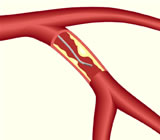| << To Blog Home >> | |
|
|
February 8, 2011 -- 8:15pm EST Fractional Flow Reserve: A "How-To" Guide for
Cardiologists The results of the by now well-known FAME study indicate that a third of the blockages between 50% and 90% (as seen on the angiogram) actually had an FFR measurement of greater than 80% (meaning that the obstruction of flow was less than 20%, even though the blockage looked more significant on the angiogram). Most importantly, treating those blockages with angioplasty and stenting resulted in worse outcomes at one year -- results which have remained constant now three years later. For more information, read our exclusive interview with Dr. Nico Pijls, co-principal investigator for FAME. The bottom line is that fractional flow reserve guidance reduced the number of stents used by one-third while producing improved clinical outcomes by...one-third. A no-brainer: better results for patients, lower costs for the healthcare system. What's not to like? So in the December 1 issue of Catheterization and Cardiovascular Interventions (Volume 76, Issue 7, pages 978 –985), colleagues of Dr. Pijls, headed by Dr. Bernard De Bruyne of Belgium, published a "how-to" guide on FFR titled, "Practical tips and tricks for the measurement of fractional flow reserve". The abstract states:
FFR wires are manufactured by Volcano Corporation (NASDAQ: VOLC) and St. Jude Medical (NYSE: STJ), via St. Jude's acquisition of Radi Medical Systems of Sweden. Catheterization and Cardiovascular Interventions is the official journal of The Society for Cardiovascular Angiography and Interventions (SCAI). The advantages of FFR in decision-making for multivessel PCI are well-documented. Learn how to do one today! |
|


 I've
written a lot about
I've
written a lot about